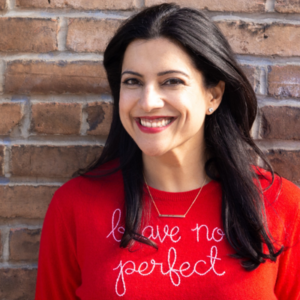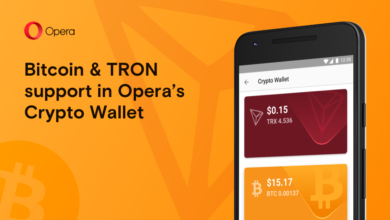It’s a hard known fact that no matter which conventional industry you look at, there’s a lack in workplace diversity and yes, bingo! “Gender gap” is one of them. Much progress has been made if you compare the generation of our grandmothers to our own, so we can technically say that the “tides are turning”, but change takes time. And it has only been a wee 120 years that women were first allowed to vote with the first women’s suffrage petition. And let’s not forget that it was only in 2011, that women were allowed to vote for the first time in Saudi Arabia. Historical “catch-up” much?
So, when Nike’s new ad narrated by Serena Williams hit the big screens during this year’s Oscars, it resonated with women, to say the least. The brand hit hard with a message about how “dramatic”, “delusional” and “hysterical crazy” women made history. An empowering message that is now #25 on YouTube’s trending page with almost 8 Million views.
The push for equal gender representation and pay has a long way to go, as the World Economic Forum predicts based on their December 2018 report; we are 202 years away from bridging the Global Gender Gap with India ranking #142 out of #149 economic countries.
But today, for this International Women’s Day, I want to focus the attention on a specific industry, and that is the Blockchain industry. Thanks to Bitcoin’s skyrocketing price of almost $20K back in December 2017, and Initial Coin Offerings (ICOs), an innovative means to democratize venture financing, blockchain technology has been put on the map.
Blockchain has captured the world’s attention between crypto enthusiasts and the traditional financial sphere where, IBM reported that the blockchain market was estimated at $706 million back in 2017, with market trading reaching almost $1 trillion in 2018. However, of the total wealth created by Bitcoin that same year, only $5 billion (5.88%) was obtained by women.
Deloitte predicts that by 2025, 10% of global GDP will be built on blockchain applications. This ambitious forecast hints on the transformative nature of this disruptive technology and the tremendous effect it will have on our society.
So, what are we waiting for?
Well, a recent study conducted by Quartz echoed throughout the industry which looked at hundreds of crypto startups founded between 2012 and 2018, revealing that only 8.2% had a woman as a founder or co-founder.
Our generation is presented with a booming industry in the making, a true “Wild West”, where we are all given the opportunity to shape this industry from the beginning (and there’s no historical gender disadvantage), so why aren’t more women seizing the moment?
This unique opportunity is just something we cannot afford to miss out. As venture capital investor, Alexia Bonatsos sums it up: “Women consider crypto. Otherwise, the men are going to get all the wealth, again”. I wished Alexia had replaced “crypto” by “blockchain technology” and then it would have been perfect. But you get the point.
It’s in the numbers
Women take less risk. It is said that women feel discouraged from entering an industry that is perceived as highly risky. It doesn’t come as a surprise then that they get cheaper car insurance rates. Maybe it’s because they have less testosterone, which is linked to taking risks, or it may be social pressure encouraging them to be cautious.
A study conducted by Alexander Mann Solutions and Trading Hub in 2016 revealed that women were 34% more successful at trading than men in traditional markets. Another study by PIIE discovered a direct correlation between gender diversity in senior management and better financial performance.
Businesses that are led or co-led by women are statistically more successful on all fronts. The more diverse a company us, the higher the profits – diversified companies are 43% more likely to have better profits. This can be seen in the tech industry, where companies that are more gender diverse enjoy 5.4% better returns than other companies.
This supposed aversion of risks could be corroborated by the perceptions and statistics in the blockchain and crypto world. The fact that coders – a profession considered male-dominated – drive this technology and that crypto-assets are regarded as volatile, could be seen as the perfect combination to perpetuate the gender bias inequality that we are so used to.
However, blockchain has been placing power in the hands of women. The perceived stability and security brought by women can improve blockchain’s legitimacy in more traditional spheres. Designed not only to decentralize data and digital currencies, the technology can be a powerful asset to disrupt the conventional standards of little to none gender diversity.
Let’s get things straight, what is “blockchain”?
Blockchain is essentially blocks of encrypted information stored in a ledger, much like a spreadsheet, but on steroids. One block of data is linked to the previous, and that is how they form a chain. What makes this technology unique is the fact that it is a network of interconnected computers that don’t rely on one central entity to facilitate interaction. The connected machines make up the network itself, and they are based on a peer-to-peer system and consensus.
So what’s the hype around blockchain and crypto? Because the data on the blockchain is distributed and can’t be copied, this makes the technology secure, with no single point of failure. Its decentralized aspect – which means no single entity can control it – renders the technology transparent and incorruptible. Blockchain’s potential can be applied in areas that go beyond providing the underlying structure to cryptocurrencies.
Not only is it expected to disrupt the traditional financial world, but it is also expected to give opportunities to women, minorities as well as providing alternative ways of doing business. The question now is – how can developments in cryptocurrency and blockchain change the gender imbalance?
It’s important to understand that this is more complex than hiring more women just to bump up the percentages and look good demographically. “The argument in favor of greater gender equality in cybersecurity is really not one of right vs. wrong or men vs. women,” says Priscilla Moriuchi, Director of Strategic Threat Development at Recorded Future. “Rather, it’s that having more women in the workplace is good for business. Diversity in perspectives, leadership, and experience is good for business.”
When asked about the digital gender gap and how to ensure women’s participation in innovation isn’t an ‘exception’ but instead, a ‘norm’, Dr Joannie Marlene Bewa, multi-award winning physician from the Benin Republic and young leader for the UN SDGs, said:
“We must provide equal access to opportunities in the market place and in leadership positions and address social norms and perceptions that limit girls and women in science. We must invest in female role models and mentors who change the face of science and tech.”
We’ve highlighted two characteristics of blockchain that can be and are being used to close the gap:
- Access to funding through ICOs, which were trending in 2017, allowed for a massive number of projects to take off from the initial conception stage. Through the creation of tokens, this way of raising money created a race to earn millions. It democratized access to see funding in a way never seen before, allowing women to spearhead projects in a non-traditional way. The chosen method of raising funds have changed in the past few months, but the idea remains the same. That being said, because of the trust usually attached to women and their low-risk taking nature, having women on the forefront of these crowdfundings is bound to attract more investors.
- The proliferation of blockchain can boost peer-to-peer finance schemes. This, in turn, can provide “banking” to the “unbanked”, which are low in costs and can have a significant social and economic impact, particularly when it comes to tackling income gap and corruption. It can also enable small and medium businesses to secure a profit, benefiting from fast and secure transactions without going through intermediaries.
The tech space is booming on all fronts, and thanks to this decentralized technology the middle man was benched. People are diving head first into this world, hungry to develop the myriad of ways that blockchain can help improve lives, provide access to services, and ensure payments. Let’s have a look at some of them.
Blockchain projects that make a difference
Diwala has taken the complexity of forced migration and codified one of the most precious items needed when war is raging: your identity. They used the blockchain technology to create digital identities for those forced to flee their homes. This allows them to secure documents such as passports, diplomas and certificates. Diwala was created by Thea Sommerseth Myhren, who hopes to strengthen people’s opportunity for independence and development.
Maxine Ryan took one of the blockchain’s key features, securely carry out financial transactions, and its potential to help 42% of women worldwide that still do not have bank accounts, and applied it to provide an alternative to the traditional financial system. She created Bitspark, a blockchain-powered initiative that allows users to cash in and cash out cryptocurrencies across Asia and Africa regions. Created back in 2014, Bitspark is one of the first blockchain-based remittances platforms, helping people and businesses have access to a “banking infrastructure’ thought a cloud-based platform.
Innovation and development present not only challenges but also opportunities to institutions such as the UN. In line with the Sustainable Development Goals, UN Women is investing in innovation for gender equality. Blockchain is targeted to empower women affected by humanitarian crisis. Together with the World Food Programme, they are tackling cash transfer to assist women and girls in refugee camps through the project “Building Blocks”.
Blockchain technology has been making inroads in alleviating some of the obstacles that plague government bodies and relief agencies as well. According to Robert Opp, director of innovation for the World Food Program,
“There are a number of potential uses for blockchain that could dramatically change the way we reach people in terms of our efficiency, effectiveness, and security.”
Beyond the humanitarian sphere, blockchain is being leveraged in areas that are lacking government attention and funding. This allows projects to impact a large proportion of the population that resides in the informal economy. According to UN Women, women make us a disproportionate percentage of workers in the informal sector. In South Asia, women make us 95% of this sector, 74% in sub-Saharan Africa, 54% in Latin America and the Caribbean. Working informally means that women aren’t protected by labour laws, thus not benefiting from social benefits such as health insurance and pensions. Due to the lack of vigilance, this translates into lower wages, unsafe conditions and exposure to violence.
Initiatives such as Social Plastic provides users with digital tokens in return for waste collection. Together with SC Johnson, Social Plastic has 8 plastic waste collection centers across Indonesia, one of the 5 countries in Asia that are responsible for more than 55% of the plastic waste found in the ocean. The Plastic Bank then sells the clean and assorted plastic to manufacturers, removing the need to manufacture more plastic. Also present on the island of Haiti, this project turns plastic into currency and encourages the collection of plastic from beaches which can be exchanged for food, phone minutes and more.
Blockchain technology has the potential to help millions of small businesses to get access to financing and break the debt cycle by lowering borrowing costs. In Brazil, a blockchain platform is leveraging blockchain technology to decrease excessive lending costs by removing the need for various intermediaries. Founded by Taynah Reis, Moeda is a marketplace that allows peer-to-peer payments, microfinancing of digital loans through fiat-pegged digital tokens. Last year they were awarded first place in the UN-sponsored hackathon. By promoting financial inclusion, we are one step forward into closing the gender equality.
It is equally important to highlight female leaders in the field, their projects, trajectories and influence.
Watchlist of women worth keeping an eye on
 Elizabeth Stark is the co-founder and CEO of Lightning Labs, where they are leveraging a blockchain protocol – Lightning Network – to build a financial layer for the internet. Coupled with smart contracts, the objective is to provide fast, scalable blockchain transactions to anyone around the world. Stark is seen as the “warrior queen” commanding an army of 1,800 developers, and as the one that transformed bitcoin’s lightning network from theory to reality. Stark also advises startups in areas such as cryptocurrencies and AI. She has been engaged in the internet freedom effort and is involved in digital currency policy.
Elizabeth Stark is the co-founder and CEO of Lightning Labs, where they are leveraging a blockchain protocol – Lightning Network – to build a financial layer for the internet. Coupled with smart contracts, the objective is to provide fast, scalable blockchain transactions to anyone around the world. Stark is seen as the “warrior queen” commanding an army of 1,800 developers, and as the one that transformed bitcoin’s lightning network from theory to reality. Stark also advises startups in areas such as cryptocurrencies and AI. She has been engaged in the internet freedom effort and is involved in digital currency policy.
 Amber Baldet was the Executive director and blockchain project leader at J.P Morgan. Known as “the blockchain banker”, Amber lead the J.P Morgan team developing Quorum, an enterprise-focused version of Ethereum, a distributed ledger and smart contract platform. Regularly seen at hacker conferences, Amber bridges the divide between Wall Street and the crypto set. Now, she is the founder of a blockchain startup called Clovyr. It aims to help customers, developers and business explore the world of blockchain.
Amber Baldet was the Executive director and blockchain project leader at J.P Morgan. Known as “the blockchain banker”, Amber lead the J.P Morgan team developing Quorum, an enterprise-focused version of Ethereum, a distributed ledger and smart contract platform. Regularly seen at hacker conferences, Amber bridges the divide between Wall Street and the crypto set. Now, she is the founder of a blockchain startup called Clovyr. It aims to help customers, developers and business explore the world of blockchain.
 Kathleen Breitman is the co-founder of Tezos, a blockchain-based smart contract platform. They raised $232 million on their ICO in 2017. Her work is focused on decentralized governance, so it’s no surprise that Tezos is a platform for smart contracts and decentralized applications. It is a “blockchain that can evolve by upgrading itself.” She’s worked at Accenture, Bridgewater Associates, Wall Street Journal.
Kathleen Breitman is the co-founder of Tezos, a blockchain-based smart contract platform. They raised $232 million on their ICO in 2017. Her work is focused on decentralized governance, so it’s no surprise that Tezos is a platform for smart contracts and decentralized applications. It is a “blockchain that can evolve by upgrading itself.” She’s worked at Accenture, Bridgewater Associates, Wall Street Journal.
 Laura Shin is an independent crypto journalist and podcast producer. She covers crypto assets and hosts the podcast Unchained: Big Ideas from the Worlds of Blockchain and Cryptocurrency. In 2016, Laura won the blockchain award for the most insightful journalist. Before that, she was a Forbes senior editor focusing on crypto.
Laura Shin is an independent crypto journalist and podcast producer. She covers crypto assets and hosts the podcast Unchained: Big Ideas from the Worlds of Blockchain and Cryptocurrency. In 2016, Laura won the blockchain award for the most insightful journalist. Before that, she was a Forbes senior editor focusing on crypto.
 Kavita Gupta is the founding managing partner at ConsenSysVentures. In 2015, she received the UN social finance innovator award for her participation at the founding of the green bond team at the World Bank. Currently, Kavita is head of the VC-hedge fund at ConsenSys, which invests in next-generation blockchain technologies to accelerate impact and solve problems through a transparent and decentralized approach. She has set up innovative investment funds across East Africa, Middle East, South Asia and the US for past 16 years through World Bank, IFC, McKinsey and The Schmidt Family office. She founded and headed the World Bank’s first innovation fund in 2010.
Kavita Gupta is the founding managing partner at ConsenSysVentures. In 2015, she received the UN social finance innovator award for her participation at the founding of the green bond team at the World Bank. Currently, Kavita is head of the VC-hedge fund at ConsenSys, which invests in next-generation blockchain technologies to accelerate impact and solve problems through a transparent and decentralized approach. She has set up innovative investment funds across East Africa, Middle East, South Asia and the US for past 16 years through World Bank, IFC, McKinsey and The Schmidt Family office. She founded and headed the World Bank’s first innovation fund in 2010.
“Digital currencies and the promise of anyone being able to access their assets from anywhere in the world are as tantalizing today as it was in 2008, perhaps even more so,” she said in an interview.
 Joyce Kim is the co-founder and was the Executive Director of the open-source payment network Stellar. She then co-founded SparkChain Capital, a $100 million fund for blockchain and cryptocurrency startups. Instead of trading cryptos, they will help companies develop products and services related to blockchain and cryptocurrencies. Joyce is passionate about the potential for blockchain on the global stage, as a tool for empowering the unbanked and tackling inequality at the grassroots. An expert in the cryptocurrency space, she said:
Joyce Kim is the co-founder and was the Executive Director of the open-source payment network Stellar. She then co-founded SparkChain Capital, a $100 million fund for blockchain and cryptocurrency startups. Instead of trading cryptos, they will help companies develop products and services related to blockchain and cryptocurrencies. Joyce is passionate about the potential for blockchain on the global stage, as a tool for empowering the unbanked and tackling inequality at the grassroots. An expert in the cryptocurrency space, she said:
“I try not to identify problems, then find an entrepreneur. Now that I’m on the other side of the table, I try my best to let entrepreneurs come up with solutions, but I’ve worked in Silicon Valley, Asia and Africa and I’ve seen that there are just so many challenges that individuals face when dealing with financial transactions that the opportunities are really endless.”
 Perianne Boring is the founder of the Digital Chamber of Commerce. Their mission is to promote the acceptance and use of digital assets and blockchain-based technologies through education, advocacy by closely working with policymakers. Their leadership team is 50% female. Perianne regularly contributes to Forbes through her column “The Beauty of the Blockchain.” She was named among CoinDesk’s “10 Most Influential People in Blockchain 2016” and “Top Woman in Bitcoin 2015” for her public policy accomplishments.
Perianne Boring is the founder of the Digital Chamber of Commerce. Their mission is to promote the acceptance and use of digital assets and blockchain-based technologies through education, advocacy by closely working with policymakers. Their leadership team is 50% female. Perianne regularly contributes to Forbes through her column “The Beauty of the Blockchain.” She was named among CoinDesk’s “10 Most Influential People in Blockchain 2016” and “Top Woman in Bitcoin 2015” for her public policy accomplishments.

Jen Greyson is the CEO of Neureal, a decentralized and open-source predictive AI machine built on the blockchain. The predictions can be used in market fluctuations and humanitarian situations, which range from predicting hurricanes to determining the safest evacuation routes. She is known for her “adamant stances” on empowering women, global issues, and educating over regulating, setting her team at Neureal apart.
About Neureal’s far-reaching impact, she says:
“We are giving everyone the ability to matter, to make a difference in the world on a grand scale. Users will be able to predict anything they’re passionate about, from hurricane paths to the extinction of a species to climate change to medical advances. And, of course… Bitcoin prices.”
 Ashwini Anburajan is the founding partner of 22X Fund. They are “democratizing access to capital by allowing investors to buy tokens representing equity across a diverse portfolio of startups.” By investing in 22X Fund, one can own up to 10% equity in the batch of 500 startups in their portfolio. Ashwini is also founder and CEO of OpenUp Inc, where they believe the power of data should lie with the consumer. They measure the impact of online and offline advertising on purchases. Last year, she gave a TED talk on “How cryptocurrency can help start-ups get investment capital.”
Ashwini Anburajan is the founding partner of 22X Fund. They are “democratizing access to capital by allowing investors to buy tokens representing equity across a diverse portfolio of startups.” By investing in 22X Fund, one can own up to 10% equity in the batch of 500 startups in their portfolio. Ashwini is also founder and CEO of OpenUp Inc, where they believe the power of data should lie with the consumer. They measure the impact of online and offline advertising on purchases. Last year, she gave a TED talk on “How cryptocurrency can help start-ups get investment capital.”
 Reshma Saujani is the founder and CEO of Girls Who Code, a nonprofit organization that is working to close the digital gender gap by teaching girls confidence and bravery through coding. Reshma started her career as an attorney and activist. In 2010 she was the first Indian American woman to run for U.S Congress. During the candidacy, she experienced the gender gap in computing classes, which served as her inspiration to start the international non-profit organization. She wrote a book entitled “Brave, Not Perfect.”
Reshma Saujani is the founder and CEO of Girls Who Code, a nonprofit organization that is working to close the digital gender gap by teaching girls confidence and bravery through coding. Reshma started her career as an attorney and activist. In 2010 she was the first Indian American woman to run for U.S Congress. During the candidacy, she experienced the gender gap in computing classes, which served as her inspiration to start the international non-profit organization. She wrote a book entitled “Brave, Not Perfect.”
Wrapping it up
The story is always the same within all major tech sectors (cybersecurity another booming industry worth mentioning) where women always tend to fall short in gender representation. But that’s not the story here.
For once, women have a unique opportunity to stop playing “catch-up”, and to be part of the design process from the start making “blockchain stronger”.





Amazing! Your site has quite a few comment posts. How did you get all of these bloggers to look at your site I’m envious! I’m still studying all about posting articles on the net. I’m going to view pages on your website to get a better understanding how to attract more people. Thank you!
I am really happy to glance at this blog posts which carries lotsof helpful facts, thanks for providing these kinds of information.
have already been reading ur blog for a couple of days. really enjoy what you posted. btw i will be doing a report about this topic<a href=바카라사이트do you happen to know any great websites or forums that I can find out more? thanks a lot.
best online pharmacy india: online pharmacy 365 – 24 hr pharmacy
mens erection pills buy erection pills pills for ed
lasix 40mg for sale order vibra-tabs buy generic ventolin for sale
What’s up friends, nice article and fastidious arguments commented here, I am in fact enjoying by these.